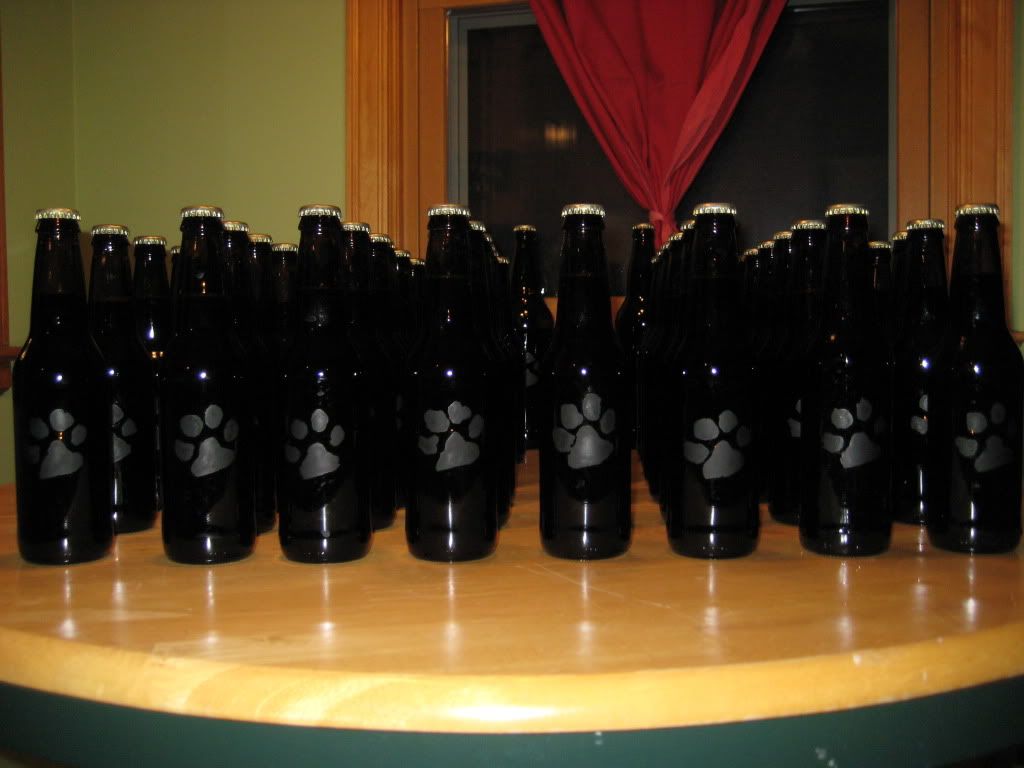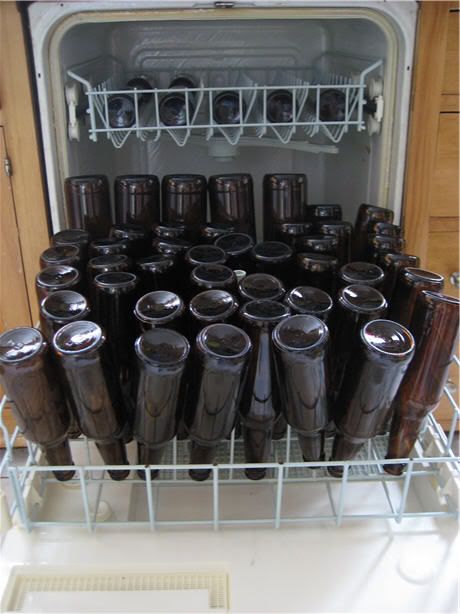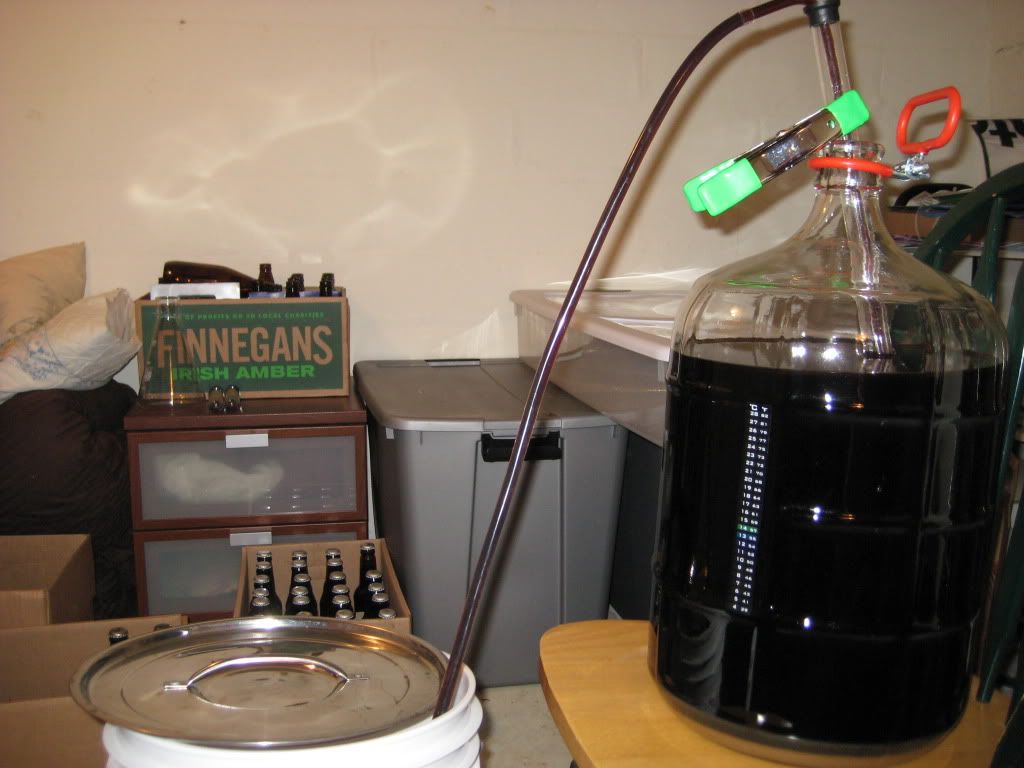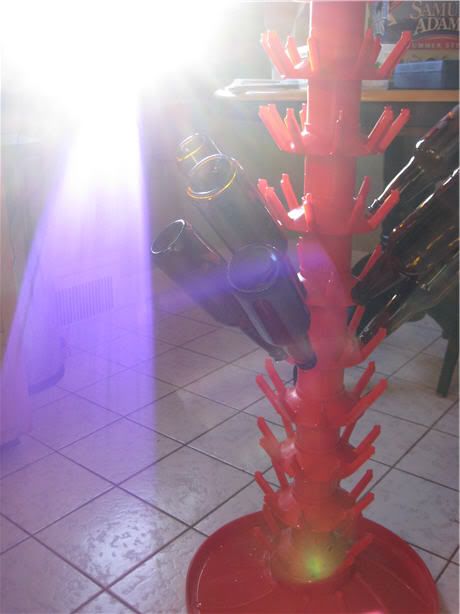Bottling Day Begs the Question: To Keg or Not to Keg?

Off-leash Coffee Stout batch, bottled New Years Day 2011
Ahh bottling day… part three of what makes a batch of beer happen. When bottling day rolls around, your beer has already had some time to mellow out in the secondary fermenter for (depending on the style being brewed) weeks to months. Right now I’m lagering a – shocker – LAGER that I brewed back at the beginning of December. I’m not really sure when I’ll throw in the towel and bottle that batch. Probably whenever I get anxious enough to taste it and when I want to make that secondary fermenter available for a different batch. I’m guessing I’ll last another month or so before I cave (the recipe recommended lagering it for anywhere from 3-12 weeks and it’s only just been three this weekend).

Clean those bottles
Anyway – bottling day. Back on January 1st I bottled a batch of coffee stout that was brewed three weeks prior. Essentially, bottling day entails siphoning the batch from secondary to the bottling bucket and then filling each bottle by hand. You boil roughly a cup of sugar in a few cups of water for 10-15 min. to sterilize it and then mix this sugar solution in with the beer as you transfer the batch to the bottling bucket. The reason for doing this is because once you bottle the sugared beer, the yeast left in the brew will jump at the chance to eat some additional unfermented sugars since, at this point in the process they have exhausted all sugar supplied by the wort weeks ago. Since this all happens in a closed/bottled environment, there isn’t anywhere for the CO2 bi-product of fermentation to go, so the beer carbonates itself in the bottle. This is known as “bottle conditioning.” Some micro and craft breweries will tout that a beer has been “bottle conditioned” as opposed to the beer having been carbonated in what is essentially a massive keg, or a “bright tank.”
I sanitize bottles by running them through the dishwasher (without soap, as the oils in soap kill head retention in beer) and steam clean them. Then I’ll dip them in some no-rinse sanitizer solution just before I fill them. It also helps that I generally am pretty good about washing out bottles fairly soon after they are open and poured. This way, no sticky beer residue has time to settle in the bottles and become a pain when it’s time to sanitize them for the next batch. Bottle caps are sanitized by boiling them for 10-15 min. in a separate pot. I’ve got a clamp capper so one by one, I cap the full batch.

Transfer the beer from the secondary fermenter to the bottling bucket
If I were to keg my beer (which I’m in the process of considering), I’d still mix in a sugar solution as I transferred to the keg though I would go lighter on the amount of sugar because I would have the keg hooked up to a CO2 tank that would help to carbonate the beer and keep it that way for months. I haven’t purchased a keg yet, mainly because then I’d have to purchase another refrigerator (probably one of those big ice-box top-opening freezers and would put a temp regulator on there to keep it at refrigeration temps instead of freezing temps).
Bottling is a pain in the ass, but it’s cool to have my beer so portable. I’d rather keg, as beer just tastes more alive on tap, but if we’re bringing some brew to a party or sharing with friends, it’s so much easier to hand someone a six pack than it would be to transport a keg and keep it cool.
I’m totally back and forth on the kegging issue. I think I envision myself being the coolest guy at the annual block party next summer if I drag a keg of my homebrew out for my neighbors to share, but I honestly don’t think I’d have too many other opportunities like that each year, so maybe it’s not worth it… But the taste!! To keg or not to keg, this is the question.

Dry bottles on a bottling tree
